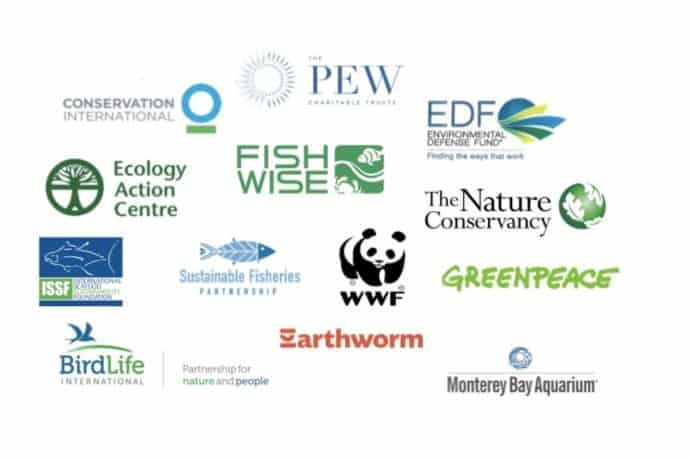[ad_1]
As the world nears the climate change tipping point, learning how to reduce carbon footprint is becoming increasingly important on both a personal and collective level.
While politicians wrestle with the question “What is climate change?” and debate the causes of climate change, most people can clearly see the harmful impact these changes are already having on the environment and seek out sensible solutions.
In the meantime, while we each strive to find ways to reduce our carbon footprint, the planet is getting hotter, its storms more severe, its animals and agriculture more endangered, calling humanity’s future survival into question.
The negative effects of climate change are becoming more pronounced every year. In 2019 we’ve already seen record-breaking floods, devastating hurricanes, and brutally intense heat waves that drain the water supply and change insect life cycles.
Unless you’re a head-in-the-sand climate change denier, the impacts of climate change are pretty obvious. At this point, all you really need to do to see them is watch the weather report or note how global temperatures have risen dramatically in recent years.
Our search for climate change solutions leads us to two important questions: What is carbon footprint, and how can you reduce your carbon footprint? Here we’ll help to answer both questions, providing actionable steps ranging from basic lifestyle changes to buying carbon offsets and creating a more energy efficient home.
We hope these tips will help give you a better understanding of how to calculate and lower your ecological footprint. Though we can’t make our respective governments take action on climate change, we can each be the change we want to see.
READ MORE: Can the Maritime Forest Survive Climate Change?
HOW TO REDUCE CARBON FOOTPRINT (15 WAYS)
- What is Carbon Footprint?
- How to Reduce Carbon Footprint With 5 Lifestyle Changes
- 5 Ways to Reduce Carbon Footprint at Home
- How to Use Carbon Offsets & Carbon Credits
Calculating carbon footprint is a way of measuring the mark an event, organization, person, or product leaves on the environment. You do this by examining how much carbon each action releases, and quantifying it in terms of carbon dioxide equivalent.
Some scientists define carbon footprint as “the measure of the total amount of carbon dioxide (CO2) and methane (CH4) emissions of a defined population, system or activity, considering all relevant sources, sinks, and storage… Calculated as carbon dioxide equivalent using the relevant 100-year global warming potential (GWP100).”
Calculating this number (originally known as ecological footprint) is decidedly complex. For instance, when you drive a car, you can’t just measure the carbon emissions of burning oil and gas. You also have to consider the energy used to extract fossil fuels from the ground, the pollution created by refining and transporting it, and even the C02 from making the car!
From the food you eat to the phone or computer you’re reading this story on, everything has a carbon footprint, whether from direct or indirect sources. And carbon footprint (which strictly measures the emission of gases that cause climate change) is just one of several indicators of environmental impact, along with land footprint and water footprint.
While the science behind these concepts can be difficult to fully comprehend, the simple explanation is that carbon footprint is a way of figuring out how much negative impact our actions have on the planet.
Once we use an ecological footprint calculator to determine how much Co2 we create, we can take numerous concrete steps in an effort to go completely carbon neutral.
READ MORE: Ted Turner on Saving the World With Alternative Energy

1. Reduce Your Food Carbon Footprint
The way we eat is having a dramatic impact on the climate. One of the worst offenders is mass-produced meat. Not only does keeping animals in factory farms make their lives miserable, but it has a horrendous effect on the environment.
When animals can’t roam freely, they’re unable to eat naturally by grazing. We now grow millions upon millions of acres of animal feed in order to raise these caged animals.
Even worse, we’re using water to grow the feed, water for the animals, gasoline to power CO2-emitting machines that plow and harvest the fields, and more gasoline to move the feed from the field to the factory farm.
Unfortunately, the list of negative environmental issues associated with factory farms grows longer. Forced into ridiculously close quarters, animals are more prone to disease, so they require antibiotics and other medications. Their waste, which carries all those drugs, is concentrated and ultimately contaminates ground and surface water sources.
Fortunately, reducing your food carbon footprint is really simple: Just eat local. Even if becoming a vegan or vegetarian isn’t of interest to you, local sources of meat are available.
When we eat local—meat, fruits and vegetables—we encourage an economy that has less food miles, less energy-devouring production, and less deforestation (i.e. no clearing forests for growing feed or grazing cattle). It’s a win-win all around.
READ MORE: A Guide to Ethical Eating When You Travel
2. Reduce Your Waste Footprint
Nearly a third of the greenhouse gas emissions in the United States come from resource extraction, manufacturing, transportation, and disposal. This statistic includes packaging. When we consume aimlessly, we create an enormous problem for the environment.
The first step towards reducing greenhouse gas emissions from waste is to notice that, by constantly throwing out old stuff and buying new stuff, we’re demanding that more resources be extracted from the planet.
Acquiring these resources requires a tremendous amount of energy, not to mention detrimental actions. We have to rip apart mountains, pollute rivers and lakes, as well as using incredible amounts of fossil fuels to mine metals and minerals.
With each product we dispose of, we increase the amount of garbage, which inevitably finds its way to landfills that are releasing greenhouse gases. Then the new products we replace them with require packaging and shipping, thus using another collection of resources.
So in order to reduce our CO2 footprint, we must learn to value the things we buy. We have to buy high quality products from the get-go, and we have to repair items rather than toss them aside. We need to consider whether updating to the latest smartphone every year, or a new car every four years, is truly necessary. (HINT: It’s not.)
While we’re at it, we all need to practice recycling, repurposing, and composting the waste that we do create. And whether it’s creating natural travel toiletries or Christmas crafts, DIY projects are a great way to reuse resources and reduce our waste in the process.
READ MORE: 15 Ways to Reduce Waste

3. Lower Carbon Footprint By Buying Secondhand
Once you learn to reduce waste in your own home, you can also work towards a lower carbon footprint for others.
Many people look at online shopping as an opportunity to get whatever they want whenever they want. But smart shoppers know it’s also a great way to buy things secondhand.
Secondhand products are a sensible choice for our budget as well as our carbon footprints. Not only does buying secondhand mean that we aren’t having to tap the planet for more resources, but we’re also avoiding the need for more packaging. That spells responsible shopping.
Many items are easy to find secondhand, at reduced prices and often higher quality than new products. Travel clothes, furniture, electronics, camping gear, cars, and countless other items are available on Craigslist, eBay, and FreeCycle. They’re also easy to find at thrift stores.
Shopping secondhand is a great way become more CO2 neutral. In times when everything is so easy to get with the click of a button, it’s easy to forget the price the planet pays for convenience. Learn to shop smarter, be patient, and find what you want without getting it brand new.
READ MORE: How to Save Money for Travel by Buying Secondhand Gear
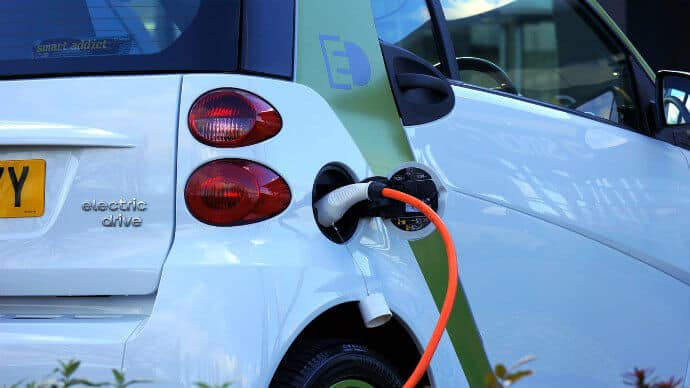
4. Reduce CO2 Emissions by Driving Smarter
In an ideal world, we’d all have access to reliable, affordable public transportation. But the fact is that most of us in the USA don’t. Unless we live in a large city, odds are we need a car for every adult in the house. That’s just the sad state of our national infrastructure.
Nevertheless, we still can reduce CO2 emissions by traveling more responsibly in and around town. Even if we can’t catch a bus or ride the subway, there are still options to ride share, particularly for longer commutes.
We also have the option to buy more fuel-efficient vehicles, perhaps considering forgoing some of the luxury of snazzier cars for the point A-to-B simplicity of an electric car.
In addition to these sorts of changes, we can also have more forethought, limiting our shopping trips to just once a week.We can learn to combine outings, clustering a trip to the dentist with a stop at the hardware store, or dinner at a restaurant with a run to the grocery store.
These solutions may seem like overly simplistic answers for those seeking ways to reduce carbon footprint. But the amalgamation of these little considerations can ultimately add up to a massive difference.
It’s all about becoming more mindful of the little choices we make every day and asking, “How will this impact my eco footprint, either positively or negatively?”
READ MORE: The World’s Best Road Trips
5. Buy Carbon Offsets & Consider Slow Travel
If there’s one thing we understand here at Out Of Town Blogs, it’s the insatiable urge to get out and see the world.
Of course there are countless ways we can travel responsibly. We can do things like stay in eco lodges and eco hotels, eat locally, and support responsible tour companies. We can also learn to minimize our flight times whenever possible.
There’s no way around the fact that air travel has an abysmal carbon footprint: Aviation accounts for 2% of global greenhouse gas emissions. One round-trip flight from New York to San Francisco can account for 10% of a typical American’s ecological footprint for an entire year.
Around 4.3 billion people traveled by air in 2018– an increase of 38 million over 2017– which caused the overall demand for jet fuel to rise by 3% at a time when we’re desperately working on reducing greenhouse gas emissions.
In other words, slow travel—taking the bus, taking a train, hiking, biking, walking, or even driving if you’re going as a family— is a much more eco-friendly means of traveling.
We can buy carbon offsets (more on this later) to ease our guilt for flying, but the truth is that we contribute to the CO2 emissions problem with each flight we take. Long-haul flights are better than short-haul jaunts, and taking just one less flight a year can make a massive difference.
READ MORE: What is Ecotourism? The History/Principles of Responsible Travel
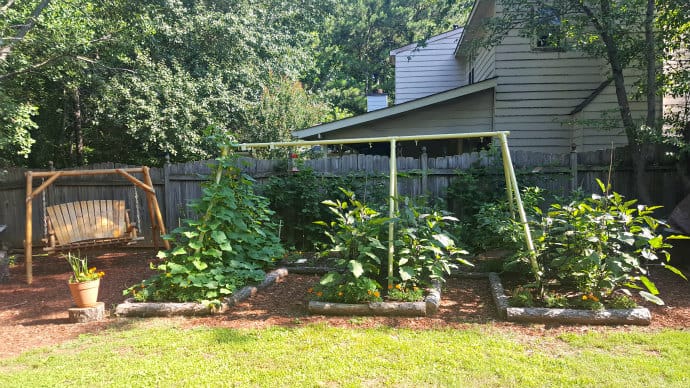
1. Grow Your Own Vegetables & Fruit
Growing food in your own home garden is as locally-sourced as it gets. When you plant and nurture your own herbs, fruits, and vegetables, you get affordable, organic, non-GMO produce with ZERO food carbon footprint miles.
But that doesn’t mean that your home garden has to be some sort of complicated or time-consuming thing.
We can grow fresh herbs on the kitchen windowsill. We can grow salad greens in pots on the patio. We can plant climate-appropriate fruit trees in the backyard. We can cultivate berry hedges along fences and, yes, we can grow seasonal vegetables in a small garden plot.
Growing fresh, healthy food at home is what most of our grandparents and great-grandparents did. But with the rise of fossil fuels, mass agriculture, and preservatives, we’ve become more reliant on a few crops served to us in hundreds of different (and largely unhealthy) ways.
If we all grew gardens at home, it would leave both us and the planet much healthier. Lawns (and massive fields) are huge wastes of energy, requiring much more fuel, water, pollution, and chemicals to maintain.
Plus, if we could each grow some of our own food, it would take the pressure (and profits) away from Big Agriculture doing it for us.
READ MORE: Permaculture Design Principles (12 Steps to a Productive Garden)
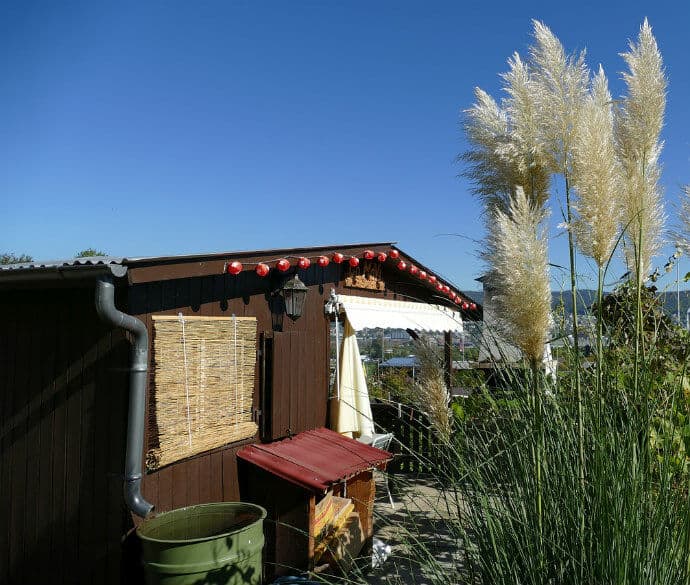
2. Reduce Your Water Footprint
If you remember your high school chemistry, you know that water does not contain carbon. It’s H2O: two parts hydrogen, one part oxygen. But getting water to our homes takes a tremendous amount of energy, and dealing with gray- and black-water requires even more.
When we turn on the tap and water flows effortlessly, it’s easy to forget how much effort went into getting it there. Water has to be sourced from somewhere, pumped to somewhere, filtered and sanitized, then moved along to our homes. Hot water on demand requires energy to heat.
Reducing our water footprint has been a common goal for decades. As a child in the ’80s, I was urged to turn off the tap while brushing my teeth. We knew back then what our rampant water waste was doing, and we know even better now that the planet is facing an increasingly urgent water crisis.
The real culprit behind the majority of home water waste isn’t dental cleansing. Toilets account for about a quarter of our household water consumption. Grass lawns are notably as bad, requiring copious irrigation to keep them green and growing. The plethora of appliances we now rely on (dishwashers, washing machines, etc.) account for a lot of waste as well.
Water conservation solutions are totally realistic. It’s a matter of buying low-flow taps and toilets, growing home gardens instead of lawns, choosing water-efficient appliances and using them responsibly, and making use of gray water—not fresh water—for things like irrigation. The trick lies in actually doing it!
READ MORE: Water.org Fights the Global Water Crisis
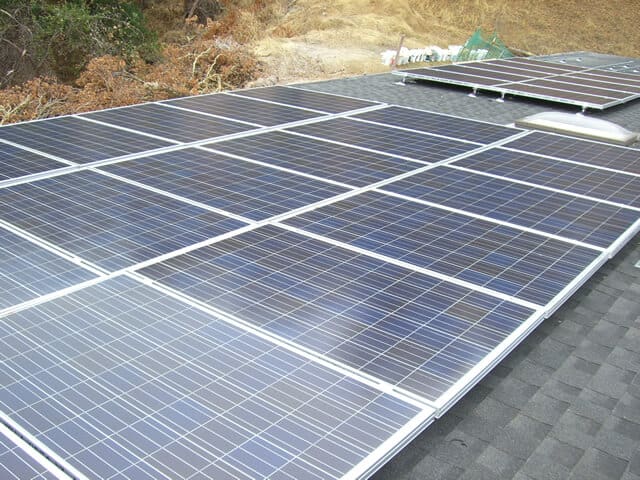
3. Reduce Your Energy Footprint with Renewable Energy
As with water, we’ve become accustomed to flicking light switches, plugging in laptops, and having instant power. It’s been this way for so long now that we as a society have forgotten that electricity was a rare luxury less than 100 years ago.
Fossil fuels—coal, fracked natural gas, oil, and petroleum— have disastrous environmental impacts, and even nuclear power has plenty of issues.
Meanwhile, renewable energy has become more affordable and more widely available. We have solar and wind energy available at home, and we even have systems that can link the old grid with the new power sources.
For those of us looking to make a difference by reducing our carbon footprint, it’s time to start investing in renewable energy. The technology has been perfected, the price is actually cheaper than fossil fuels, and it’s a great way to do our part in fighting climate change.
The last couple of centuries have been a guiltless grab for power, but the next century is going to find us running out of fossil fuels and having done irreparable damage to the planet. So do us all a favor and switch to renewable energy however you can, as soon as you can.
READ MORE: Al Gore on Climate Change & Renewable Energy

4. Use Passive Heating & Passive Cooling
First-world households (even “green” ones) often forego minimizing the amount of energy we need. In fact, heating and cooling our homes accounts for around 50% of the energy we use.
In truth, depending on where you live, the ambient temperature outside is generally comfortable for at least half the year. However, we’ve become accustomed to controlling our indoor temperatures with extreme precision. Many of us no longer take advantage of pleasant days.
We don’t wear appropriate clothes for the climate; instead, we simply change the thermostat. We don’t design our homes to utilize passive cooling and heating, even though temperatures can be significantly adjusted by utilizing windows and curtains.
South-facing windows can allow the sun’s warming rays to beam into the house all day in the winter. In the summer, they can be blocked with shutters and/or curtains to reduce our reliance on air conditioning.
If you can learn to passively heat and cool your home, you can substantially reduce your carbon footprint. And if we as a society can learn to have a wider range of comfortable temperatures (say 60-80ºF), we can reduce our demands on HVAC units and the fossil fuels that run them.
READ MORE: Arctic Activist Sebastian Copeland on Global Warming
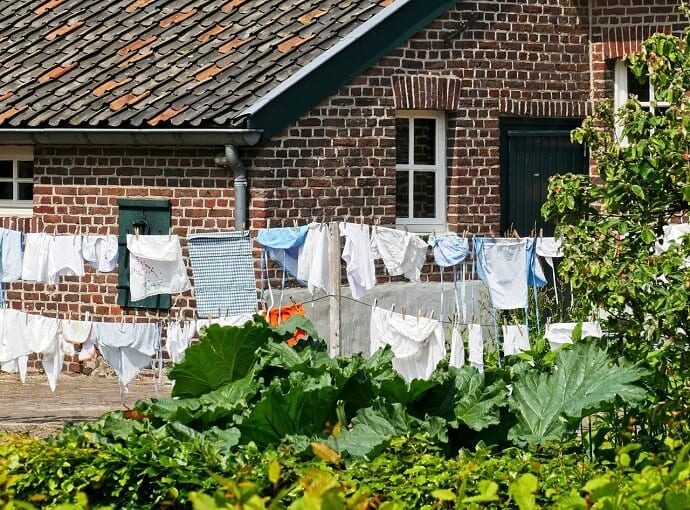
5. Create a More Energy Efficient Home
Many of us already own homes that we’ve spent hundreds of thousands of dollars on, but that doesn’t mean we shouldn’t strive to make them more energy-efficient.
There are many simple solutions for retrofitting homes that were not designed to be environmentally friendly, which can both conserve energy and save us money long-term.
Many of these fixes don’t even require major construction. Adding better insulation around leaky houses will keep the cool in during summer and out during winter. Installing Energy Star appliances (particularly water heaters) can also make a huge difference.
Many little inexpensive changes can compile to make a notable difference as well. Putting up a clothesline instead of using an energy-hogging dryer is good. Switching to energy-efficient LED light bulbs saves a lot of energy and money in the long run, particularly for an entire household.
Of course, we can also add solar panels where appropriate. There are a variety of programs that allow us to feed energy into the grid and get discounts, rather than trying to power the entire house with solar.
READ MORE: How to Audit Your Home for Energy Efficiency
How to Use Carbon Offsets & Carbon Credits
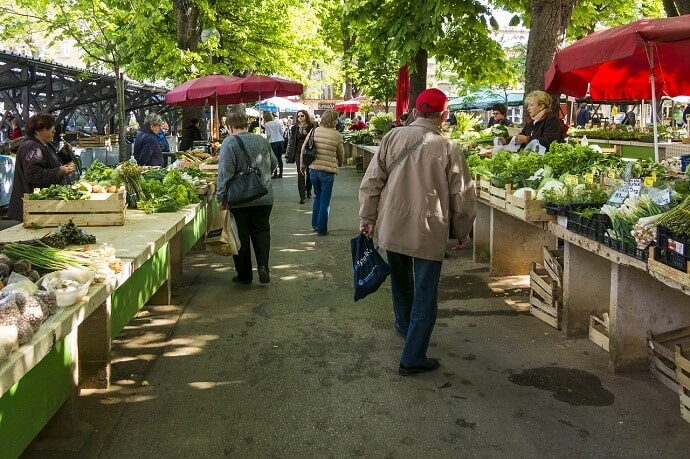
1. Use an Ecological Footprint Calculator
The first step towards going carbon neutral is to use an ecological footprint calculator (a.k.a. carbon footprint calculator), which is available for free from numerous sources online.
These calculators take users through a series of questions that help them determine the approximate number of pounds of carbon they use each year. It’s both an eye-opening process as well as a means of getting a firm grasp on where to work on improving your personal efforts.
The questions typically cover several facets of life we’ve discussed here, including your automobiles, air travel, home energy use, waste production, and dietary habits.
Each of your answers helps provide the program with a rough guesstimate of the carbon emissions you create each year. Most of us who live in the industrialized world lead lifestyles that would require several Earths to support them.
Here are 10 different online ecological footprint calculators to try: Global Footprint Network, Terrapass, CarbonFootprint.com, EPA, The Nature Conservancy, Carbon Fund, WWF, Ecological Footprint, Earth Day, and Conservation International.
Many of these calculators can also help you figure out how to counteract your carbon footprint with carbon offsets.
READ MORE: Going Green: 60 Earth Day Tips You Can Use Every Day
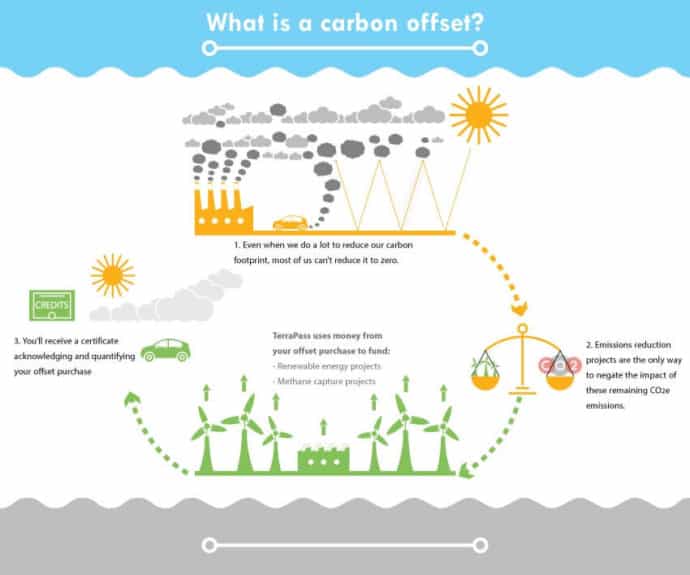
2. Buy Carbon Offsets
Once they learn their carbon footprint, some people like to buy carbon offsets to balance out the amount of carbon they put into the atmosphere.
While it’s vitally important to take the aforementioned steps to reduce our individual carbon footprints, buying carbon offsets (or carbon credit, in the case of corporations) is way to ensure you’re truly living a carbon neutral life.
So what is carbon credit? Carbon credit is a consolidated way to make monetary investments to help with the reduction of carbon emissions on a global scale.
Carbon offset programs allow individuals, companies, and governments to purchase offsets that invest in renewable energies, energy efficiency, reforestation, and similar ventures in order to counteract their own carbon emissions.
It’s important to understand that a carbon tax is not the same thing. Carbon taxes are levied on companies that create an abundance of carbon, and are not optional. But, like carbon offsets, they help to thwart climate change by financing green innovation and discouraging the use of fossil fuels.
Unfortunately, carbon offsets can provide a false sense of security. A corporation can simply buy carbon offsets, but continue producing far too much CO2 for the planet to handle. An individual might buy carbon offsets to make up for flying, but taking fewer flights is even better.
We look at carbon offsets as a good way minimize feelings of guilt as you begin to transition into a lower carbon footprint lifestyle.
READ MORE: Eco-Friendly Initiatives That Will Change the World
3. Do Business with Eco Friendly Companies
Often we aren’t given green options when choosing the companies with which we do business. Large power companies in particular seem to have a monopoly, leaving little to no eco-friendly choices in the areas in which we live.
However, that isn’t to say that we can’t make the effort. Eco-friendly companies are out there, working hard to provide those alternatives for us.
They are, of course, often more expensive than less conscientious companies. But if we think in terms of our overall eco footprint, paying more is sometimes the cost of greener living.
We can also be aware of what it means to use green companies. The organic market stall at your local farmers market is a green company. The non-profit thrift store is a green company, even if that’s not their primary goal. We just have to support the companies that have good intentions.
While doing this will never make us CO2 neutral, it does help make our carbon footprint less and less destructive. Our dollars matter: Collectively, we control the market. So if we demand low carbon emission initiatives, companies will comply if they want our business.
READ MORE: How to Choose An Eco Hotel
4. Support Passionate NGOs
Finding NGOs focused on protecting the environment is easy, but narrowing down the ones you’d like to support can be hard.
Along with making changes at home, you can reduce your carbon footprint by supporting these organizations, whether it be with time, money, or promotion.
NGOs are working for the same reductions we’ve discussed here, but with a larger, collective ecological footprint. Supporting that work is almost as important as doing our own part at home.
If those of us who can afford the time and/or money each chose just one NGO to support, these organizations could do their work much faster and with more resources at their disposal. This work affects the entire planet, and time is increasingly of the essenece.
Here’s a list of 10 environmentally-focused NGOs to check out: The Climate Reality Project, Global Footprint Network, World Wildlife Fund, EarthShare, Environmental Defense Fund, Carbon Trust, Ceres, Conservation International, The Nature Conservancy, and GreenBlue.
READ MORE: The 20 Best Environmental Charities & Animal Charities
5. Live Carbon Neutral
Ultimately, with all of the information we have co;lected here, it’s possible to begin living carbon neutral today.
We can buy carbon credit to offset our less-than-green lifestyles as we transition ourselves into more responsible homes, cars, appliances, and energy production. We can invest in our future, both through direct action and through donations to envioronmental NGOs.
In other words, we already have the power to use less power.
We have the power to start making individual changes now. We have the power to set examples for our out-of-whack governments. We have the power to support companies that care about the planet as much as profit. We have the power (and tools) to hold ourselves accountable.
And it all starts at home, with the way each of uses power! –Jonathon Engels; video by Simpleshow via CC BY 3.0 license
[ad_2]




